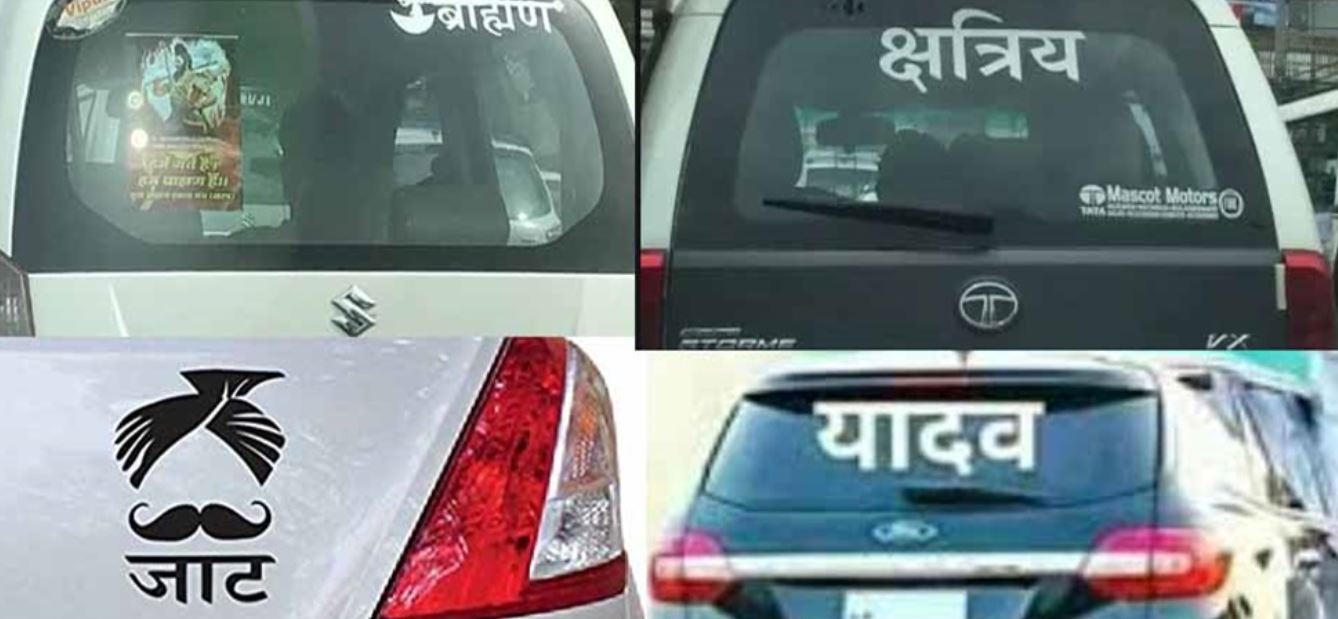“Cracking Down on Caste Stickers in UP: Addressing Symptoms while Ignoring the Underlying Ailment”
The sight of cars in Calcutta donning stickers declaring occupants as “Bangla Bangers,” “Chattering Chatterjees,” or “Manly Mondols” is rare, as is the case with Kochi’s absence of “Nefarious Nairs” or “OG Syrians” stickers. However, North India has witnessed the open display of caste and community pride through such stickers, leading the Uttar Pradesh Police to conduct a special drive, initiated by Chief Minister Yogi Adityanath, to fine vehicles bearing “caste and religious” stickers. This is not the first attempt, as a similar crackdown occurred in 2020.
Despite these efforts, the trend continues, revealing the ineffectiveness of these actions.
The elite in Delhi and its suburbs, primarily belonging to the upper caste, have often found amusement in lines like “Guns and Guts, made for Jats” or refrained from overtaking vehicles that announce “Jatt risky after Whiskey.” Such displays extend to declarations of “Dangerous Gujjar” or the assertion that a “Brahman” owns the vehicle, possibly a “Dad’s gift.” These declarations can be seen prominently in parts of NCR in UP and convey a similar message.
One might dismiss these expressions of community pride as not-so-subtle warnings or jokes, but that overlooks a broader concern. It fails to recognize these as seemingly innocuous indicators of a much graver issue.
In theory, modern cities should promote anonymity. Amidst the hustle at Rajiv Chowk Metro Station or while waiting in line at fast-food joints, one should not be privy to the caste backgrounds of fellow occupants. In a post-liberalization and administratively efficient India, this should correspond to reduced segregation and fixation on hierarchy and identity. However, the (North) Indian city falls short of this ideal, remaining distant from urbanity.
The boundaries of class and caste are subtly yet firmly enforced, akin to an attack on a Dalit groom in rural UP attempting to ride a horse. Simultaneously, the city – due to its sheer size – poses a challenge to entrenched privilege, identity, and inequality.
The true elite, possessing not only financial but also cultural and social capital, do not need to assert their identity publicly. Their influence operates less conspicuously – caste is neither openly discussed nor acknowledged. Communities in transition, on the cusp of transformation from supporting roles to leading ones, often embrace explicit forms of caste assertion. On the streets, they counter the possibility of being mistaken for someone of lower status. Car stickers affirm identities linked to power and perhaps insecurity, displayed in an environment where these factors may not hold the same weight. This identity is proclaimed through a parochial declaration on a car that surpasses the annual earnings of most Indians and is manufactured in Japan or Germany.

